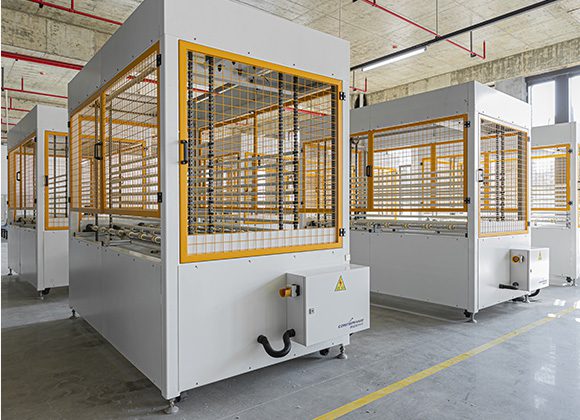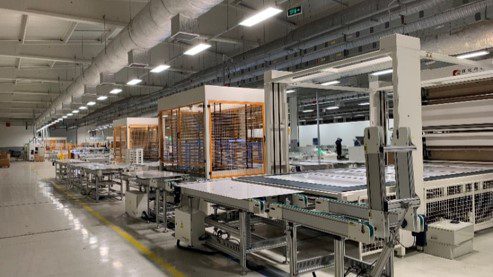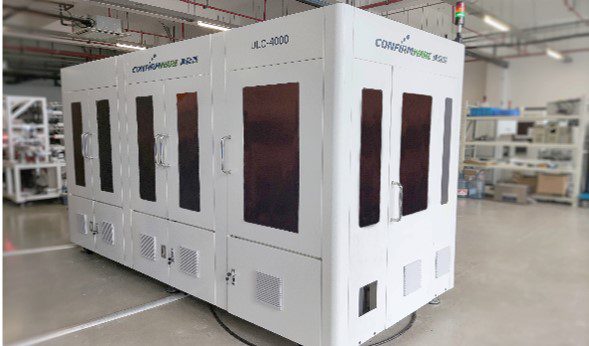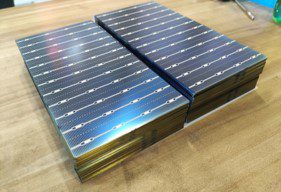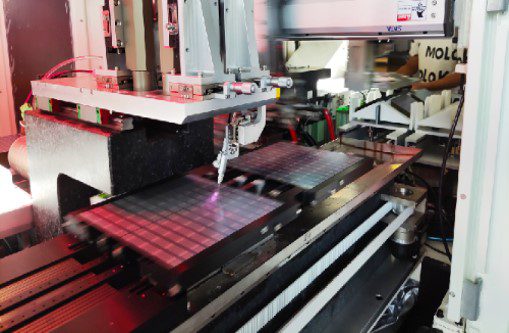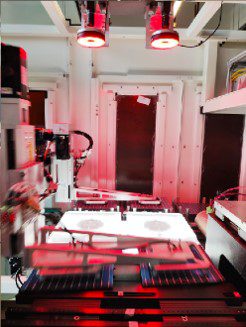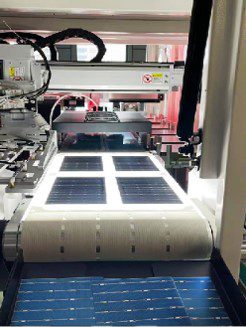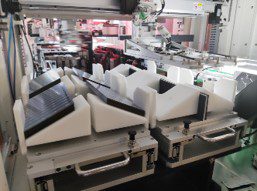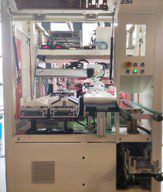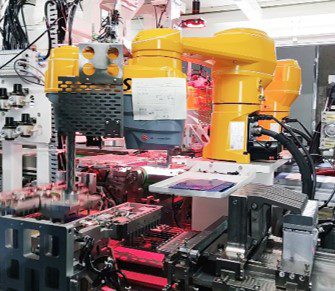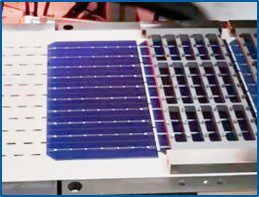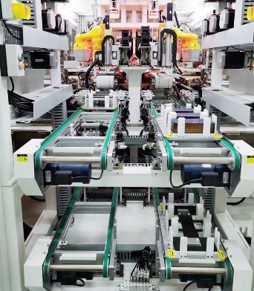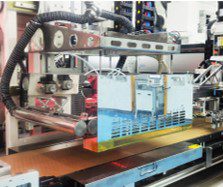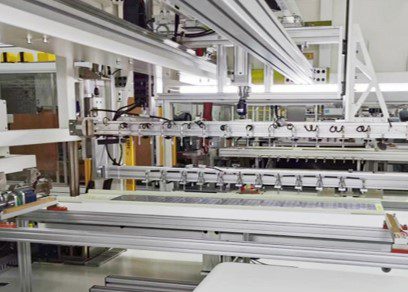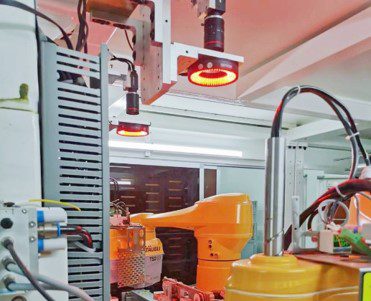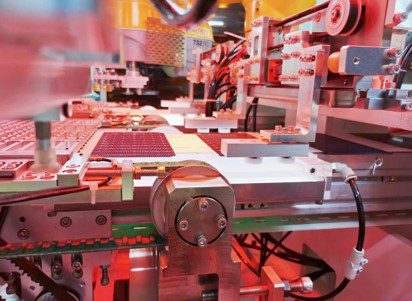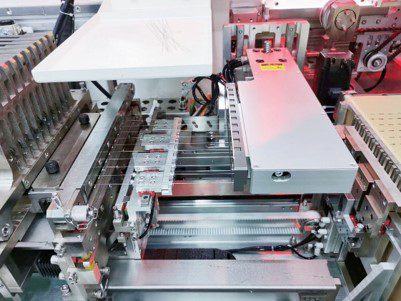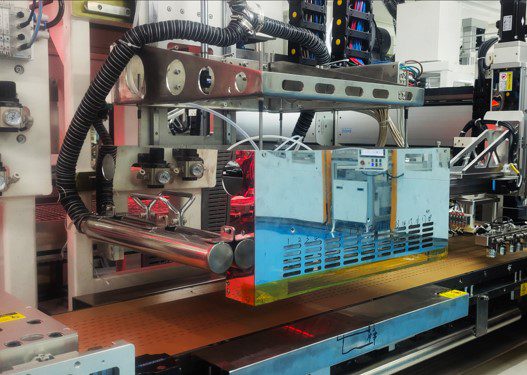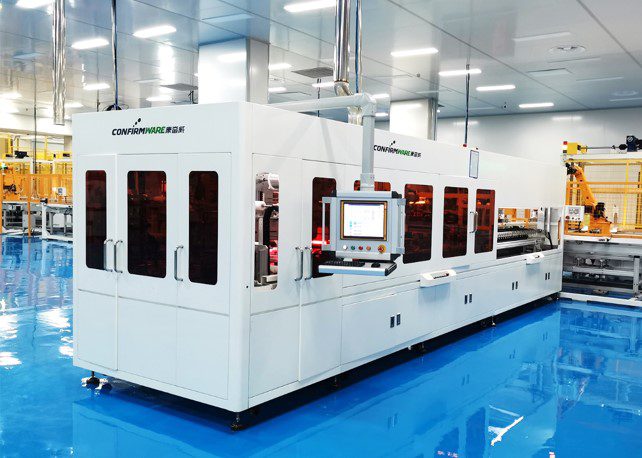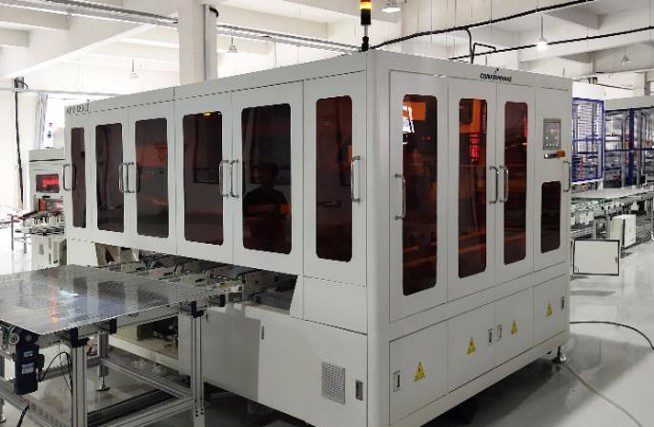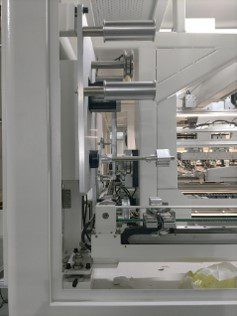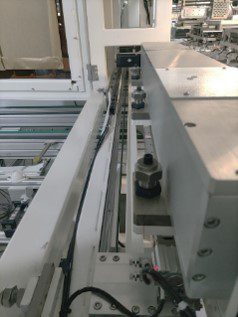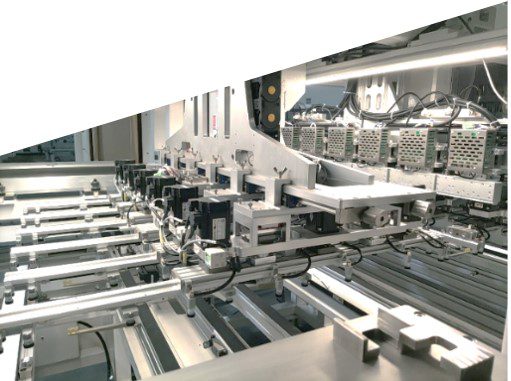Solar/PV Module Automated Production Line
SEMIPHOTON, INC. together with our manufacturing Partners, offers state-of-the-art fully-automated and semi-automated Solar/PV modules production lines, designed to fit any capacity and factory size.
Our automated Solar/PV modules production line includes a complete set of equipment, such as solar cells laser cutting, string soldering, welding, glass loading, layup, laminating, framing, J-Box soldering, curing, final testing, labeling, sorting, and packaging of the produced modules.
To improve production efficiency, our Solar/PV modules production line is equipped with intelligent MES and defects detection systems: EL-VI, Hi-Pot, IV, Calibration, and other testers.
Equipment is made with high-quality hardware components and software. Each machine in the turnkey production line is optimized to ensure consistent output, quality, and increased productivity.


Step-by-step Process of Solar/PV Module Manufacturing
- Cell Cutting
- String Soldering
- Glass Loading
- EVA Cutting
- Layup
- Busbar Soldering
- Taping
- EVA/TPT Cutting
- Double-Glass Loading (optional)
- EL and Visual Testing
- Laminating
- Trimming
- 90º Flip Inspection
- Framing
- J-Box Backside Gluing
- J-Box Box Soldering
- J-Box Potting
- Curing
- Cleaning
- 180º Flip
- Hi-Pot Testing
- IV Testing
- EL Testing
- Labeling
- Corners Chamfering
- Final Cleaning
- Sorting
- Packaging
Cell Cutting
The automated non-destructive Laser Cell Cutting machine is used to cut solar cells.
- Compatible with 156-230mm cells, thickness: 150-200μm
- Equipped with acousto-optic Q-modulated fiber laser with narrow optical pulse and high-definition detection camera to ensure cells placement accuracy, detect cutting line straightness and identify any cracks, broken edges, and corners.
- A fast, efficient, stable, and reliable system to cut solar/PV cells.
Cell Stringer
One of the most critical machines in the Solar/PV production line is Stringer attaches and solders ribbons on the photovoltaic cells IBC, MBB, and various busbars, ensuring that the cells are aligned and function properly on the photovoltaic module.
The Stringer uses the IR soldering method. The welding section is equipped with a temperature-controlled system to achieve closed-loop temperature control ensuring consistent temperature in the welding area reducing the risk of thermal shock, fracture, and cracking.
The MBB Cell stringer is compatible with 156-220mm, 5BB-12BB, and 18BB half-cut cells and capable of manufacturing up to 3400 pcs./hr.
The ultra-high speed MBB cell stringer is compatible with 166-230mm half-cut cells, 210-230mm 1/3 or 1/4 cut cells, 9BB-20BB, and is capable of manufacturing up to 7200 pcs./hr., with a Yield of string ≥97%.

Glass Loader
The automated Glass Loader is used for glass handling, loading, and placement. Driven by a servo motor with high positioning accuracy, stability, and reliability. Equipped with vacuum air supply detection to avoid glass dropping during operation or in case of power loss.
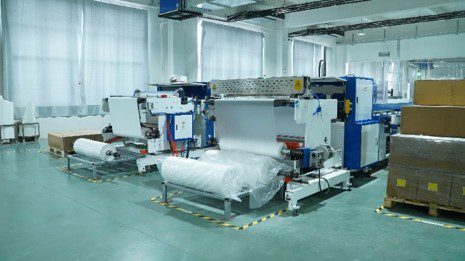
EVA/TPT Cutting
The EVA cutting machine is used for automatic cutting of EVA/POE film and placement of the 1st film on glass at the beginning of the solar modules production process.
The EVA/TPT cutting machine is used for cutting and laying both 2nd EVA/POE film and TPT/Backsheet film on top of the stack with soldered cell strings, before lamination.
Layup
The automated Layup machine is docked with Stringer and used to place welded cell strings on the glass/EVA film.
High-precision 6-axis robot and CCD to achieve high-precision layup.
Wide range of compatibility: 156-230mm,1/2 cut and 1/3 cut cells.
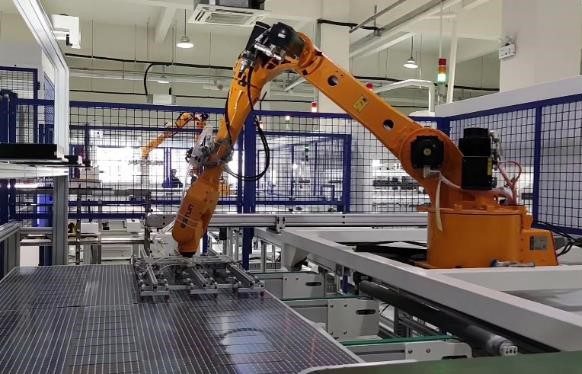
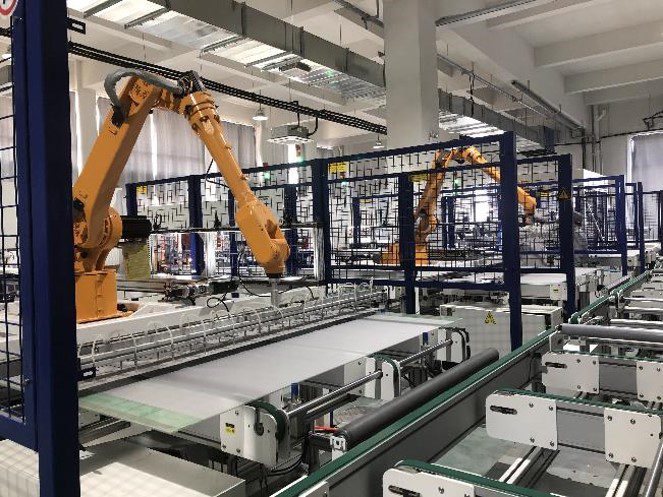
Bussing
An automatic Bussing machine is used for welding of busbars and interconnection in solar module production.
The Bussing machine is compatible with 156-230mm, 5BB-20BB, half-cell/full-cell busbar soldering, cycle time 22 s/module, and welding with a Yield ≥98%.
Supports secondary correction, equipped with a vision system to ensure the consistency of string spacing output. The intelligent equipment control system and one-touch operation makes it easy and quick to operate.
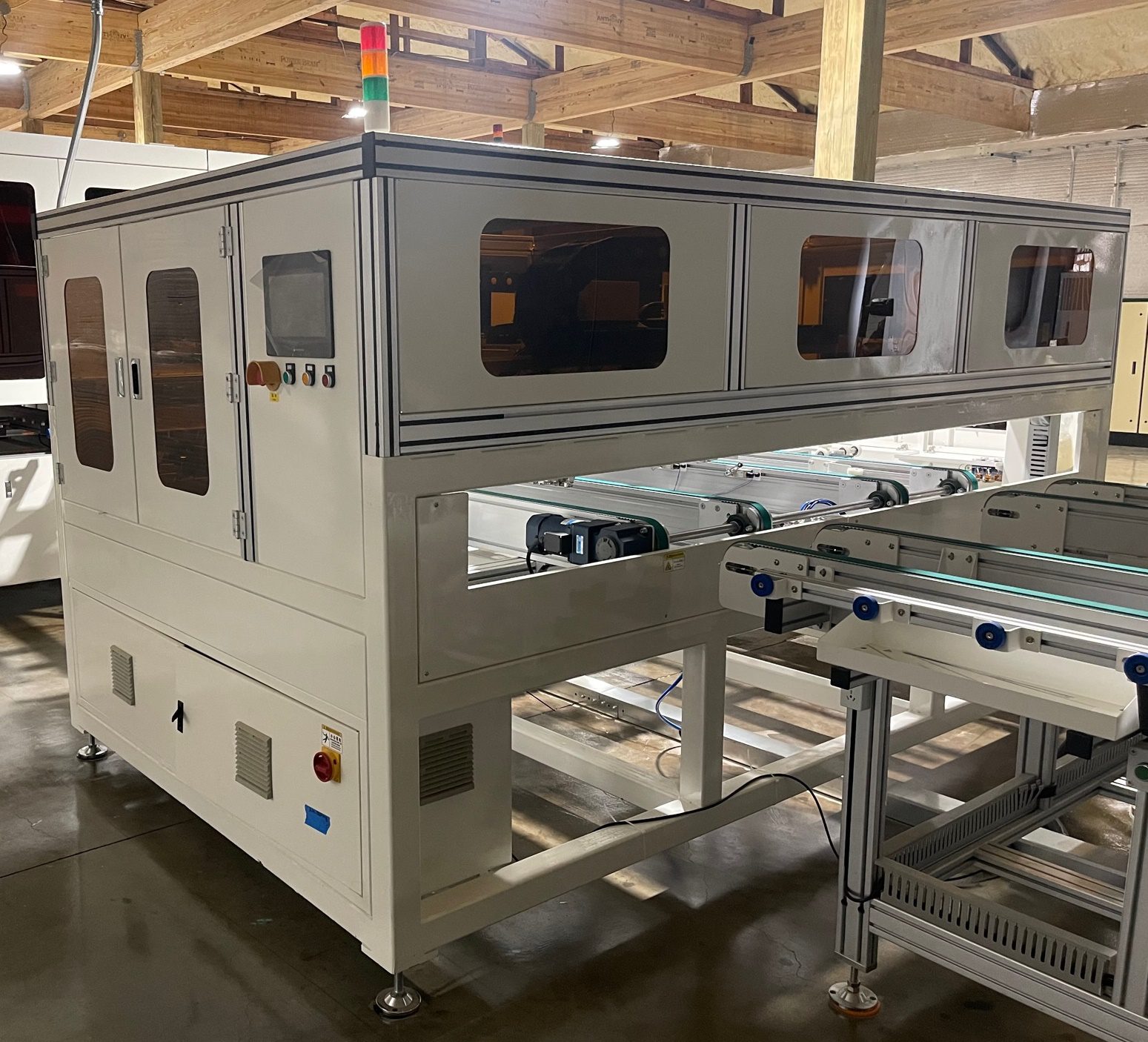
Taping
An automatic Taping machine is used to attach tape between cell strings to secure and avoid displacement of cell strings during the lamination process.
Double Glass Loader and Repair Manipulator
Automatic glass handling, loading, and placement are applicable in the production of double glass modules. A repair manipulator is used to remove the upper layer of glass and reapply it again after the repair procedure.
Contact Us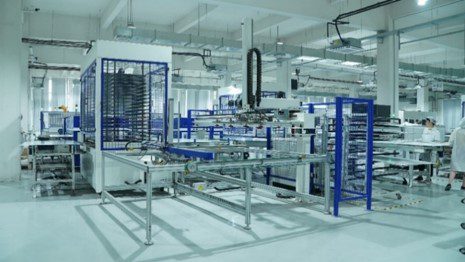
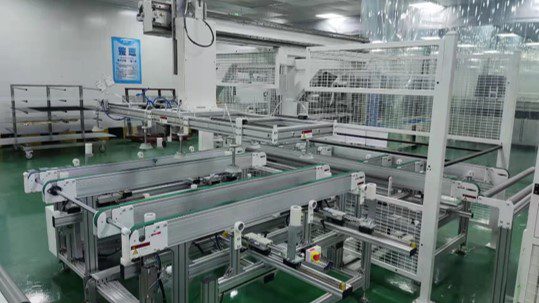
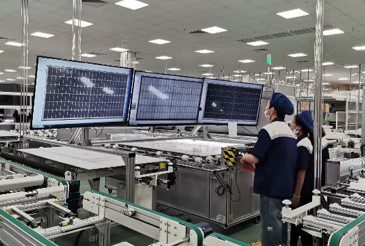
EL/VI Tester
The electroluminescence (EL) and visual (VI) tester is used for automatic defects detection and module appearance inspection before lamination, such as insufficient solder, hidden cracks, deviated welding, missed angles, damaged edges, foreign matter, unfinished spots, etc.
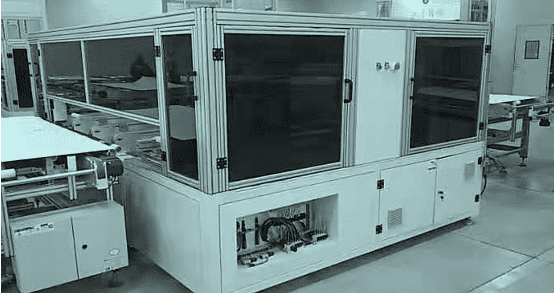
Double-Glass Sealing
The Double-Glass Sealing machine is used for the automatic tape edge banding/sealing process of the double-glass module before lamination.
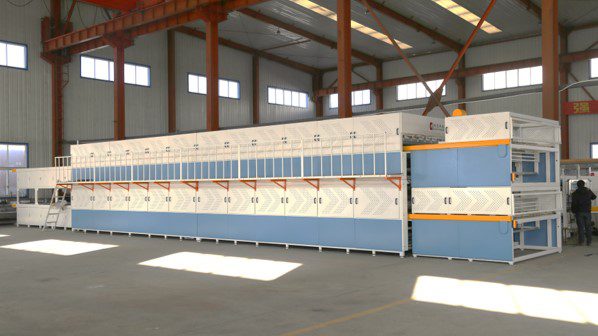
Laminator
The Laminator is used to package and seal solar modules via heating and vacuuming processes.
The Laminator can be equipped with a single-level or dual-level structure and two sections of hot presses, each with an independent heating vacuum system. It is applicable to the continuous production of monocrystalline, polycrystalline, and amorphous solar/PV modules.
Dual-level two sections of hot presses are used to reduce working time by about 40-50% and to improve production efficiency.
High compatibility: Applicable to the lamination of standard, double-glass, and PVB material modules.
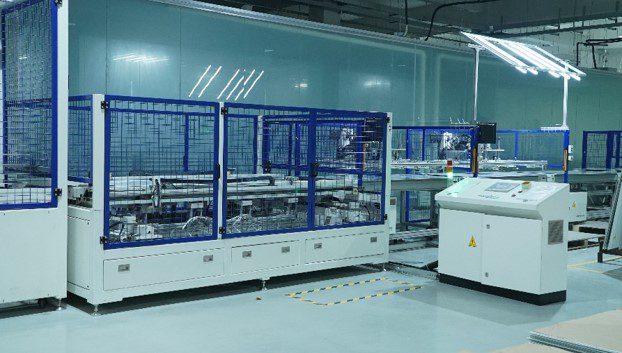
Trimming
The Automatic Trimming machine is used to trim/remove any excess materials from the module edges after the lamination process.
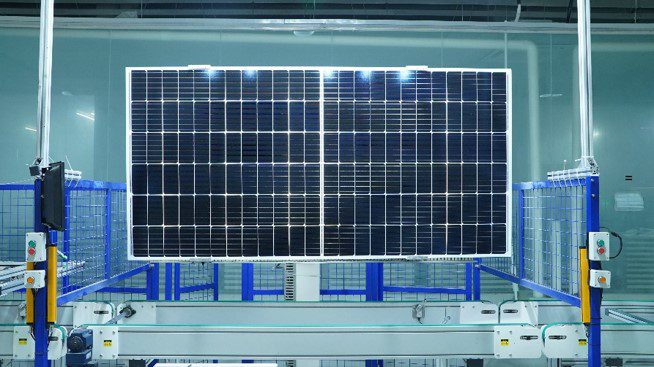
Flip Inspection 90°
This is used to flip modules 90° under which operators can inspect and confirm the module quality.
Framing and Glue Dispensing
The Auto Framing and Glue Dispensing machine is used to grab and install glue-coated aluminum frames automatically.
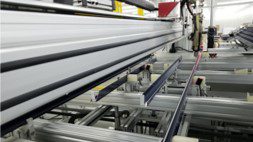
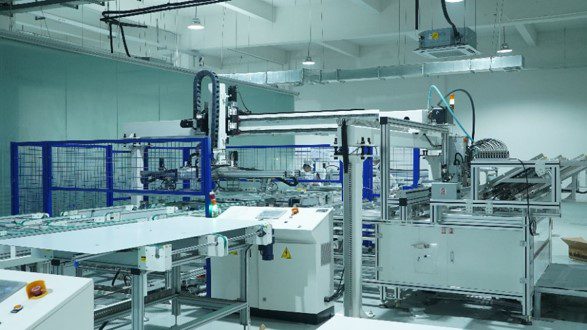
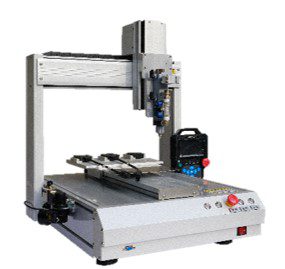
J-box Glue Dispensing
The J-box Glue Dispensing machine is used to automatically apply glue to the bottom of the junction box.
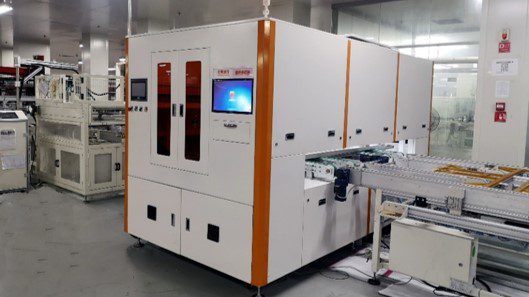
J-box Soldering
J-box Soldering is used for the automatic junction box soldering process.
J-Box Glue Potting Manipulator
The J-Box Glue Potting Manipulator is used to automatically dispense and fill the glue to seal soldered J-Boxes.
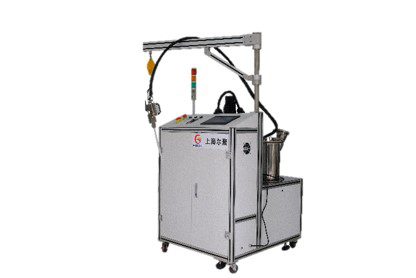
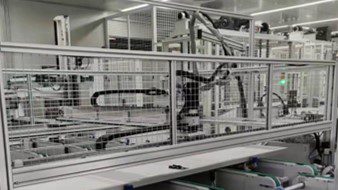
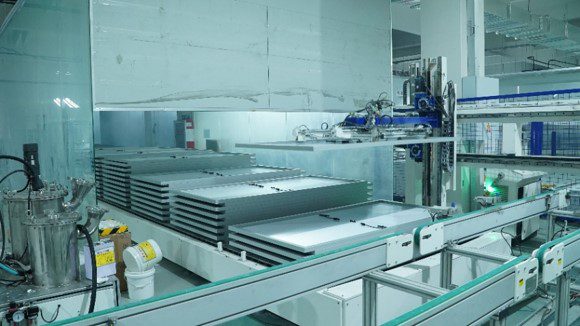
Curing Manipulator
The Curing Manipulator is used to grab and place modules on the conveyor line before and after the module curing process.
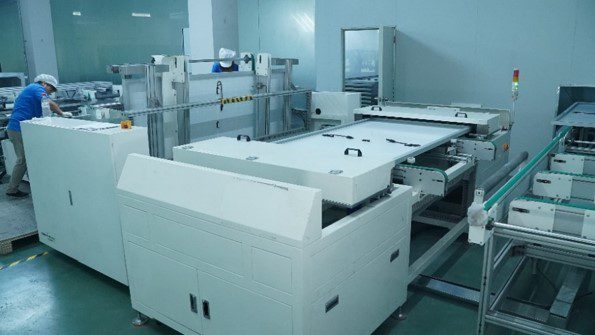
Chamfering
The Chamfering machine is used to automatically chamfer/cut four edges of the modules.
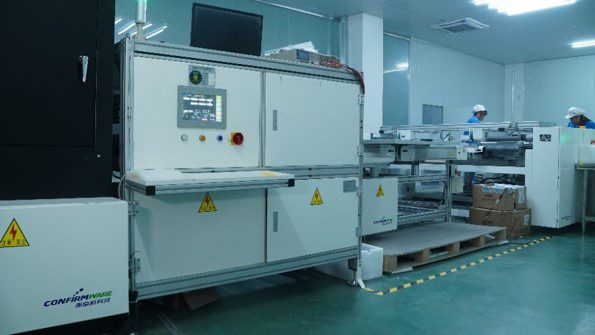
Hi-Pot Tester
The Hi-Pot Tester is used for automatic voltage withstands and insulation tests of modules.
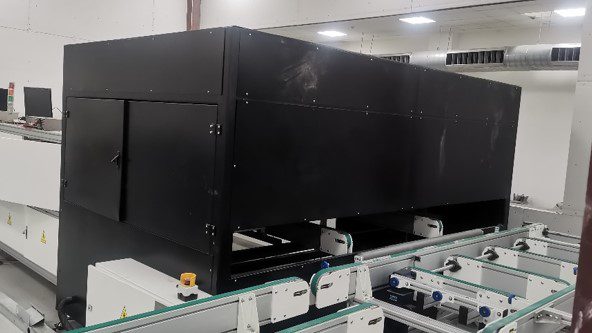
Calibration Machine
The Auto Calibration machine compares modules in production with certified standard modules.
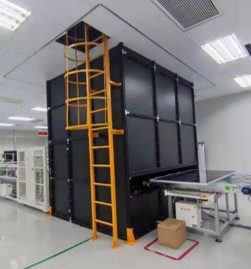
IV Tester
The Automatic IV Tester is used for a module power test.
Measurable parameters: I-V curve, P-V curve, irradiance curve, short circuit current, open circuit current, peak power, voltage, current at peak power point, current at fixed voltage point, fill factor, conversion efficiency, serial resistance, parallel resistance, etc.
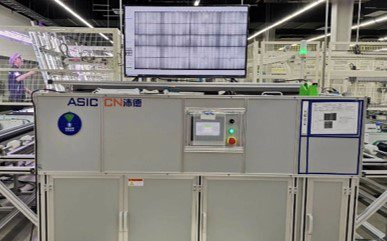
EL Tester
The electroluminescence (EL) tester is used for automatic defects detection after lamination, such as insufficient solder, hidden cracks, deviated welding, etc.

Labeling
The Automatic Labeling machine is used to print and accurately attach labels to a solar module.
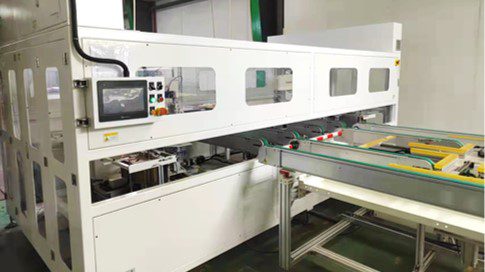
Protection
Automatic Protection machine is used to package the four edges of a module.
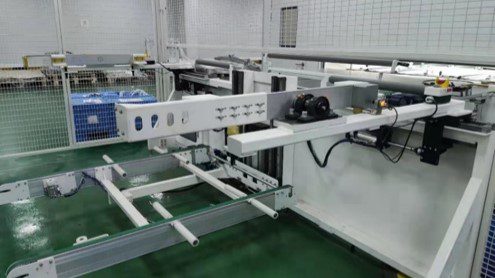
Flipper 180º
Flipper 180º is used to flip the module 180° to inspect and clean modules from both sides.
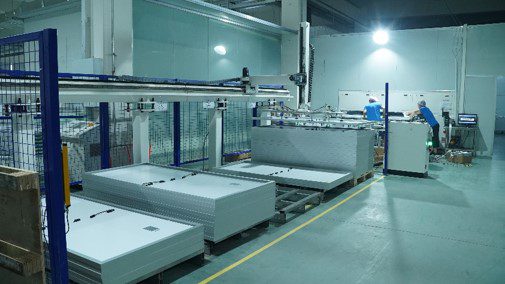
Sorter
Automatic Sorter is equipped with a manipulator to grab and position modules by power and grades.
Buffers and Conveyors
The horizontal or vertical Buffers are module cache/storage mechanisms used to avoid stacking of modules in the production line.
Automatic programmable conveyors interconnected via control centers. The various conveyors are used for stable and secure transportation of solar materials and modules at production lines.
